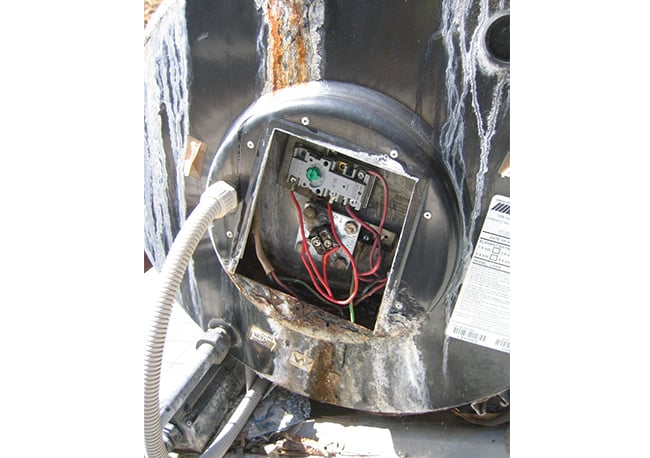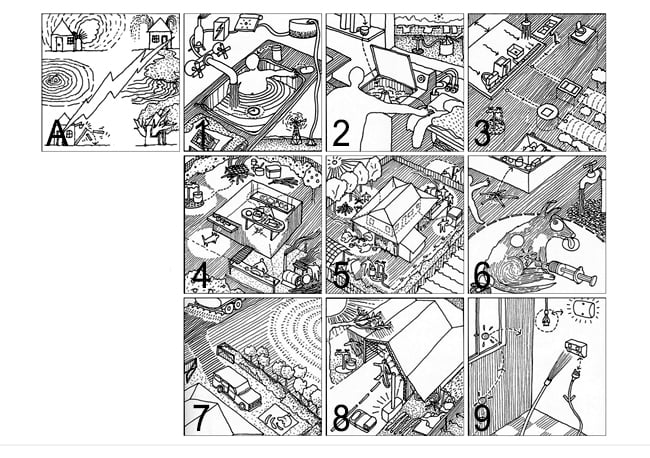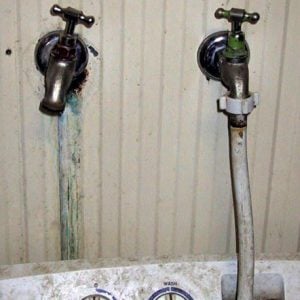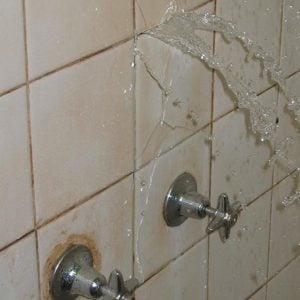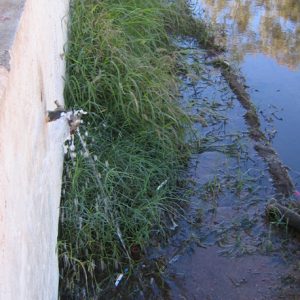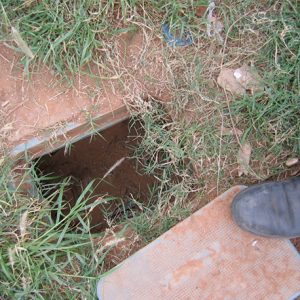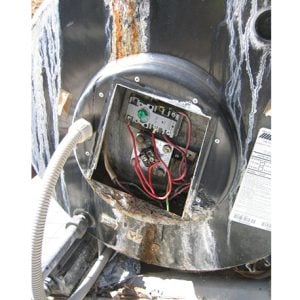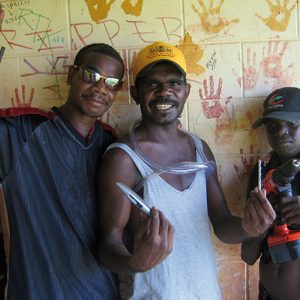Research and Development
Maintaining Houses for Better Health (MHBH)
Project Details Designing for better health
- Introduction
- The Problem
- The Solution
- Trial projects
- Where to next?
- From Housing for Health - the Guide
Introduction
Healthabitat identified the following project aims for the MHBH project.
To:
- Improve targeting of housing repair and maintenance (R&M) funds to maximise value for dollar investment
- Emphasise workflow outcomes to ensure quality control of R&M work
- Develop IT to support flexible, secure data collection, management and reporting capabilities
- Trial new tenant engagement strategy
- Trial the employment of a local indigenous worker
This project developed a workflow focused database/ survey program and trialed it at a community in Central Australia.
Identifying poor environments:
The database/survey development highlighted 2 distinct levels of housing R&M service being provided at the trial community,
- Power and water
- Fabric/structure.
The services were functioning adequately, however the delivery of services targeted at the fabric (ie the structure) of the houses was not adequate.
This has resulted in the deterioration of the structure and safety of the building fabric. It presents a significant economic and social cost.
Designing for better health
Information management systems for housing R&M (ie databases) must have the capacity to regularly collect survey information that identifies changes in the ‘function rates’ of the house.
This house function rate set against the expenditure of R&M funds provides a way to assess the impact of R&M work. It will show any improvement or deterioration of the housing stock.
This analysis will:
- Assist targeted decision making
- Provide a framework for continuous improvement in the delivery of R&M services.
The Problem
Delivery of services (R&M funds) targeted at the fabric (ie the structure) of the houses was not adequate. This has resulted in the deterioration of the structure and safety of the building fabric. It presents a significant economic and social cost.
The images are examples of water infrastructure & health hardware failures found.
The Solution
This project:
- Developed a workflow focused database/survey program to improve targeting of housing R&M funds
- Developed workflow practices that emphasise ‘outcomes’ rather than’ process’ (data flow diagrams) to ensure quality control of R&M work
- Trialed remote data management procedure
- Trialed new tenant engagement strategy- ‘Women in Technology’ workshop to further engage tenants in critical health and safety hardware awareness
- Employed local indigenous housing worker
Trial projects
This project developed a workflow focused database/ survey program and trialed it at a community in Central Australia.
The trial showed:
1. The database/ survey program will assist targeted decision making and provide a framework for continuous improvement in the delivery of R&M services
2. The focus on workflow ‘outcomes’ has highlighted a lack of quality control by the Housing provider at both the project management level and individual job management level.
- Housing R&M programs should undergo periodic and comprehensive workflow analysis review.
- The aim of the review is to identify, establish and monitor benchmark procedures.
- These procedures ensure the alignment of policy directives with the actual day to day work activities of staff members
3. The use of remote technology at the trial community level, for data collection, project support and reporting was problematic. Internet access was available but there was limited IT resource management capability.
- The use of the internet connection to an off site database was not successful at the trial site.
- The trial community management did not have the capability to maintain complex communications infrastructure eg internet, Skype and Teamviewer/Webex
- In this type of remote setting with little management support, it is preferable to continue with established and robust technology like telephone, fax and photocopier.
- Continuing with less complicated technology is also much more cost effective in terms of providing and maintaining communications in remote areas.
4. ‘Women in Technology’ Workshop engaged with significant individuals and small groups of women, improved the Tradesmen’s engagement In the process, instructed women in the community about critical safety and health hardware and utilised their status in the community to act as ‘ambassadors’ of relevant housing information to a broad cross section of people within the community. Through this process an informal housing committee was established.
- Tenant engagement activities need to be developed around specific, short term and ‘hands-on’ workshop formats. This provides a high impact, targeted and cost effective method for regularly engaging tenants in relevant housing management issues.
- Engaging ‘significant’ individuals or small groups has the potential to be effective in creating role models and getting housing management information to the broader community.
- Establishing a formal local housing committee will provide a way to improve communication between the housing provider and the residents.
5. Employment of a local housing worker was critical to the project in terms of:
- Gaining access to houses for survey work
- Establishing a local link between the project managers and the tenants
- Gaining accurate information regarding resident numbers living in the houses
- Identifying head tenants, identifying who was paying rent, who had signed tenancy agreements & changing tenancies
- Compilation of housing waiting lists
- Assisting tenants with filling out of R&M forms
- Maintaining records of daily housing requests and issues from the residents
- Assisting trades with access to houses for repairs
- Organising meetings with local Council and tenants and the provision of general information to the residents regarding their housing issues
This is the most important recommendation to implement.
The nature of remote indigenous communities means that it is critical to employ a local housing worker. If the housing provider does not a have a local presence, sustainable housing management will not be achievable.
We recommend that a local indigenous housing officer is employed to:
- Develop a ‘housing’ presence in the community
- Collect necessary housing information,
- Provide tenant support and
- Provide local liaison and co-ordination of housing activities
The options for local indigenous employment in the housing sector are many and varied but they will all depend on having an identified local housing worker as the primary contact person for the housing provider in the community.
Where to next?
Contact Healthabitat for more information on this Product
Or read more about the Social Aspects of our work
From Housing for Health - the Guide
A cyclical maintenance program is essential for sustaining the safety and health of houses and yard areas in a community. This program is best staffed by local people who have knowledge about the parts of health hardware that they can maintain and the components that require licensed tradespeople to be brought into the community.


